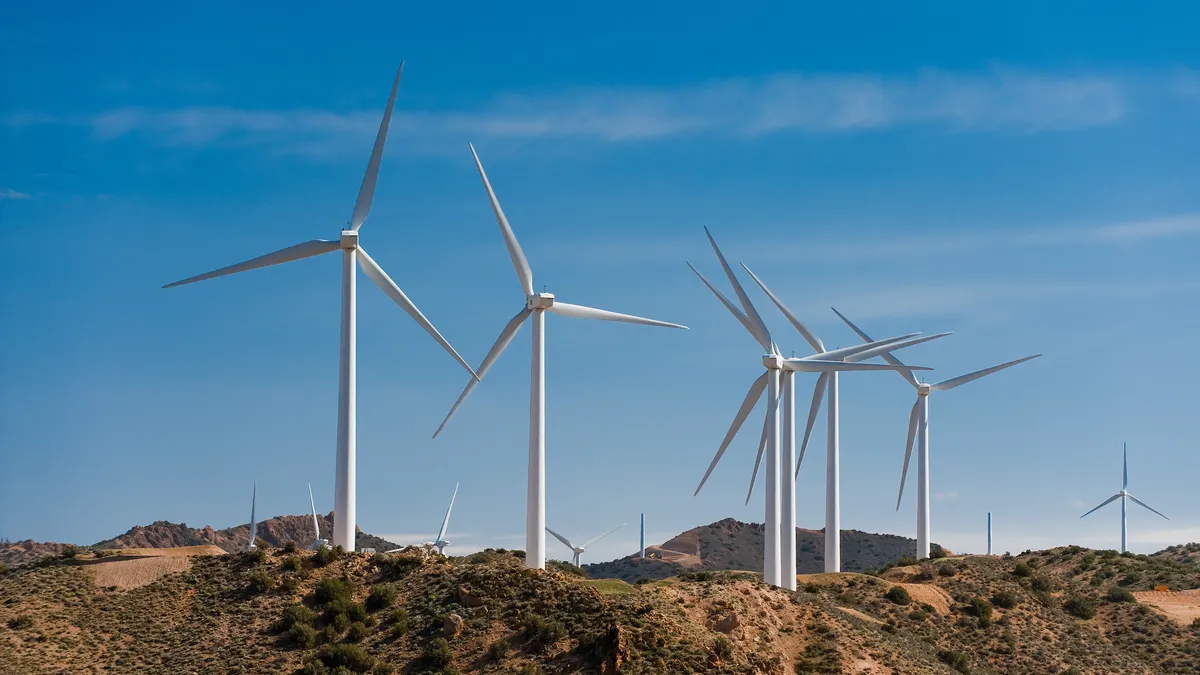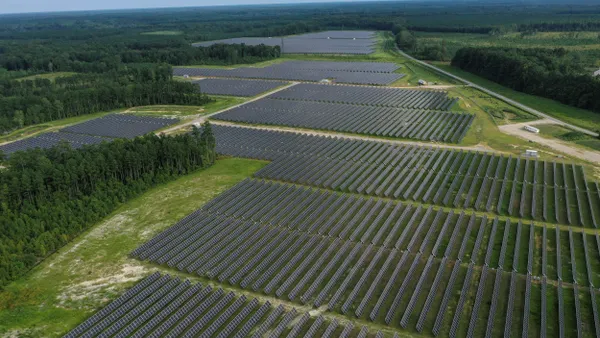Dive Brief:
-
Global clean energy spending is on track to exceed $1 trillion in 2021, Edward Morse, managing director and global head of commodities research at Citigroup, said during a webinar on the state of energy finance hosted by Our Energy Policy on Wednesday. However, Citigroup estimates spending must reach $3-5 trillion per year to keep global warming below 2 degrees Celsius.
-
Inosi Nyatta, a partner in Sullivan & Cromwell's Finance & Restructuring Group, said she believes that with the rapid growth of the renewable industry, the world will close the gap between current energy spending, and what is needed to achieve the Paris Agreement. However, others on the webinar panel were less optimistic.
-
Government leaders must take care to align climate policy with market incentives, according to Catherine Mann, global chief economist at Citibank. A patchwork of approaches between nations and companies, she said, simply moves carbon around, rather than eliminating it.
Dive Insight:
Private capital is entering a second phase of climate action, Jonathan Goldberg, CEO and founder of investment and advisory firm Carbon Direct, said during Wednesday's webinar. The first phase, he said, was the wave of corporations announcing their climate ambitions. The second, he said, is private capital making good on those promises.
But while Nyatta expressed optimism about the growing adoption of PPAs and the world's ability to close a funding gap projected by Citigroup, other panelists expressed concerns about the limits of private funding to drive change.
Some banks, insurance companies and other private institutions have recognized a risk associated with carbon emissions, and have begun to try to quantify and report those risks on their balance sheets, Mann said. The current challenge, she said, is inconsistency. Standards and ideas about what it means to be carbon-free vary from one institution — and government — to the next, which simply moves carbon out of areas with stricter regulations and oversight, Mann said.
"You can have, for example, a regulated financial institution clean up their balance sheet and discipline their borrowers toward a climate-friendly product, but then the dirty stuff just goes to another financier," Mann said. "The end result, of course, is you get a clean balance sheet, but you end up with the same amount of carbon."
One potential solution, Goldberg said, is carbon pricing. A fixed price for carbon could align market incentives and make it easier for financial institutions to compare the environmental risk of one investment to the next, he said.
The panelists agreed carbon pricing might be the most straightforward solution, but they also agreed it was politically unlikely. It also couldn't facilitate the energy transition on its own, Goldberg argued, because focusing on carbon alone doesn't take into account the need for enabling technologies such as energy storage.
"When you look at the total storage amounts needed for individual utilities," Goldberg said, "on one utility it's five times the total U.S. capacity today. It's just not there."
The scale of the disparity between existing storage capacity and the need for energy storage, Goldberg said, suggests to him that there is a need for other technological solutions, including carbon capture. And while Mann argued that with the right incentives, venture capitalists could help to cover the upfront costs of deploying such technologies, Goldberg disagreed, saying the cost of such projects was simply too large for private investors.
"There are zero venture capital firms that would provide financing for industrial scale carbon capture or hydrogen," Goldberg said. "They are not willing to take on that risk. Relying on venture capital for this won't work."














